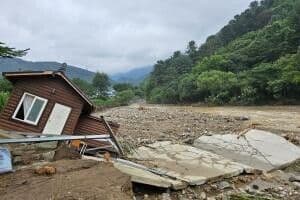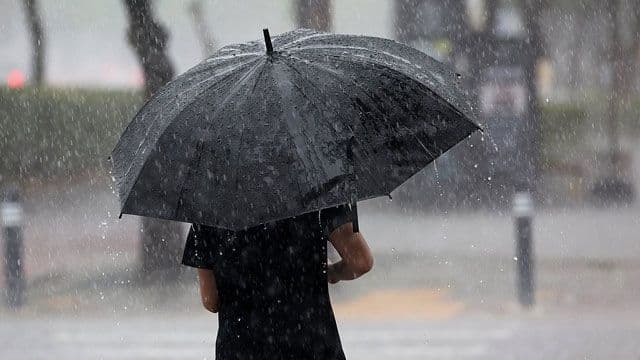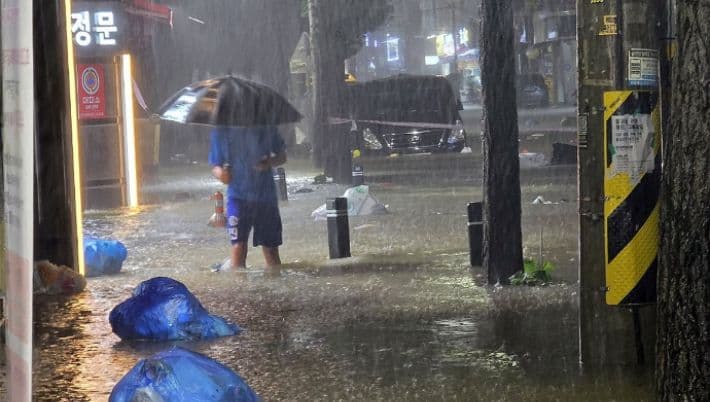Decoding the Dual Extremes: Korea's Summer of Sweat and Storms
Unpack Korea's climate paradox: unrelenting heatwaves clash with torrential downpours. Discover their profound impact on daily life and the innovative societal adaptations emerging.

The Unprecedented Duet of Extremes
is grappling with a bewildering new reality, where the summer script seems to have been rewritten to feature a relentless, often alternating, performance by two formidable forces: scorching heatwaves and torrential downpours. This isn't just about a hot day followed by a rainy one; it's a profound shift where both extremes manifest with unprecedented intensity, sometimes even simultaneously. Consider the latest forecasts: while temperatures across the nation are expected to hover between 29 and 34 degrees Celsius, with hitting 34 degrees, the relief from the heat is fleeting. Heatwave advisories might ease, but the oppressive humidity ensures perceived temperatures remain around 33 degrees Celsius, extending tropical nights where the mercury stubbornly stays above 25 degrees. Yet, this sweltering heat is punctuated, or even accompanied, by warnings of extreme rainfall. Areas like the southern coast, , and 's mountainous regions could see up to 250mm of rain, with hourly downpours reaching a staggering 50 to 80mm, accompanied by lightning and strong gusts. This dual onslaught is challenging conventional understanding of summer, forcing us to reckon with a climate paradox that demands immediate attention.

Beyond the Thermometer: Life Under the Dual Threat
Living under this 'climate paradox' extends far beyond mere meteorological observations; it infiltrates every aspect of daily life, creating a constant state of vigilance and uncertainty. The sheer unpredictability makes planning a nightmare. Will your outdoor plans be ruined by sudden, violent thunderstorms, or will you face the risk of heatstroke under a blazing sun? Public health is a paramount concern, as the intense heat and humidity exacerbate conditions like heat exhaustion, while flash floods pose direct threats to safety and infrastructure. We're seeing tangible signs of this struggle, from expanding its cooling shelters to 333 locations, even on weekends and holidays, to the very real dangers highlighted by tragic incidents like the neglect of a child in extreme heat. Farmers, too, bear the brunt, with reports of crops like pumpkins 'steaming' in the fields, a stark indicator of how profoundly nature's rhythms have been disrupted. This isn't just about discomfort; it's about navigating a new normal where safety and stability are constantly under threat.

Nature's Shifting Script
The emergence of this perplexing climate pattern isn't a random anomaly; it's a stark manifestation of a broader, more profound narrative: the . Scientific consensus points to global warming as the primary driver behind these intensified extremes. The mechanism is clear: a significant influx of warm, highly humid air from the south is a major culprit. This air mass, laden with precipitable water vapor, creates a double-edged sword. On one hand, it fuels the oppressive, persistent heat and tropical nights, making even moderately high temperatures feel unbearable. On the other, this abundant atmospheric moisture acts as a potent fuel for extreme precipitation events. When conditions align, this moisture condenses rapidly, unleashing 'extreme downpours' of 50 to 80mm per hour, transforming once-manageable summer rains into destructive deluges. This isn't just a bad summer; it's a glimpse into nature's shifting script, where the very fundamentals of our climate are being rewritten, demanding a deeper understanding of the interconnectedness of these seemingly disparate weather phenomena.
Adapting to the Unpredictable
In the face of nature's rapidly changing script, is left with no option but to pivot towards robust strategies for adaptation and resilience. This isn't a challenge for meteorologists alone; it's a societal imperative, calling for innovation across all sectors. Urban planners are now tasked with designing cities that can withstand both inundation and blistering heat, considering everything from permeable pavements to green infrastructure. Early warning systems, already crucial, must become even more sophisticated and localized to provide timely alerts for both heat-related dangers and flash floods. Public awareness campaigns play a vital role in educating citizens on immediate safety measures and long-term preparedness. Beyond infrastructure and technology, it's about fostering a collective mindset of adaptability. This summer’s 'climate paradox' underscores that we can no longer rely on historical weather patterns. Instead, a proactive, flexible, and integrated approach is essential for building communities that can not only survive but thrive amidst the unpredictable oscillations of a changing climate.
Related Articles

Korea's Summer Climate Puzzle: Heatwaves, Deluges, and the Art of Prediction

Korea's Summer Climate Puzzle: Heatwaves, Deluges, and the Art of Prediction

The Unyielding Embrace: How Korea's Historic Heatwave Reshapes Everyday Life

The Unyielding Embrace: How Korea's Historic Heatwave Reshapes Everyday Life

Weather Whiplash: Navigating Korea's Shifting Summer Skies

Weather Whiplash: Navigating Korea's Shifting Summer Skies

South Korea's Shifting Skies: Navigating an Era of Extreme Weather
